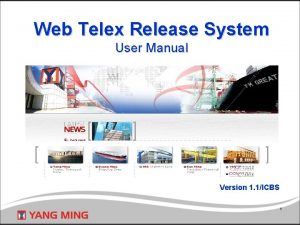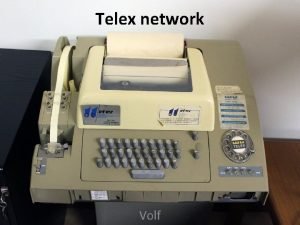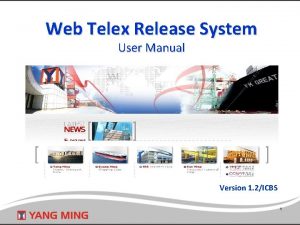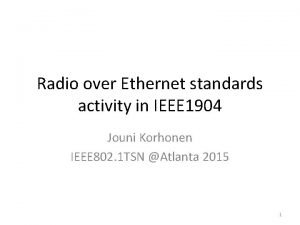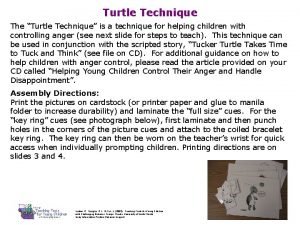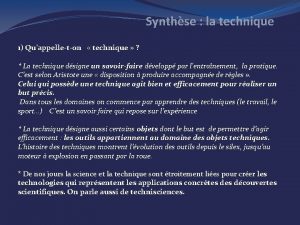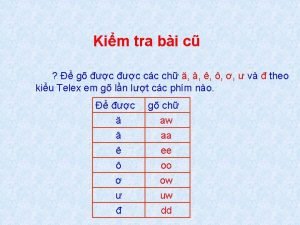TELEX OVER RADIO The radio telex technique is












- Slides: 12

TELEX OVER RADIO

The radio telex technique is built upon experience gathered from the design of the land telex network. By means of radio telex, a ship station is given the possibility of sending messages from the ship to the international telex network. Narrow Band Direct Printing (NBDP) is often used in radio terminology.


The system When a ship has traffic on hand, it will establish a radio telex connection on the radio frequencies assigned for telex purpose (List of Coast Stations). The ship station consists of a transmitter, a receiver, a special adapter called MODEM (MOdulator – DEModulator), and a teleprinter.

PC STATION 1 Modem RX TX TX RX STATION 2 Modem PC

The Modem The modem has a very important function in the radio telex system. Without a modem, the system would not be able to function. The modem takes care of the adjustment of signals from the text editing equipment to the radio transmitter, and vice versa. • Automatic Error Correction (ARQ) • Changing the transmitter direction • Programming selective call numbers • Calling

Modulation In maritime communications the Upper Side Band (USB) is used for all kinds of communication. On telex channel, the centre frequency is placed in the middle of the USB at 1500 Hz.

• Method of modulation is called Frequency Shift Keying (FSK). • FSK is achieved when transmitted signals alternates between two frequencies • Two frequencies SPACE and MARK • F 1 B emission class F = frequency modulation 1 = One channel containing digital information, no subcarrier B = Electronic telegraphy, intended to be decoded by machine (Radioteletype and digital modes)


ARQ (Automatic Error Correction) • • Ordinary land telex –alphabet of 5 ARQ systems – alphabet of 7 Uses two way communication Ensures that every character has the correct proportion of 4 to 3 • If the proportion is wrong, will request for a repetition.

FEC (Forward Error Correction) • Use for distress communication, NAVTEX, traffic lists, news bulletin, etc. • Error correction is achieved by using FEC • Every character is transmitted twice with an interval of 280 milliseconds • If the character is received as garbled, it will be printed as a star ( * ), or only a space.








